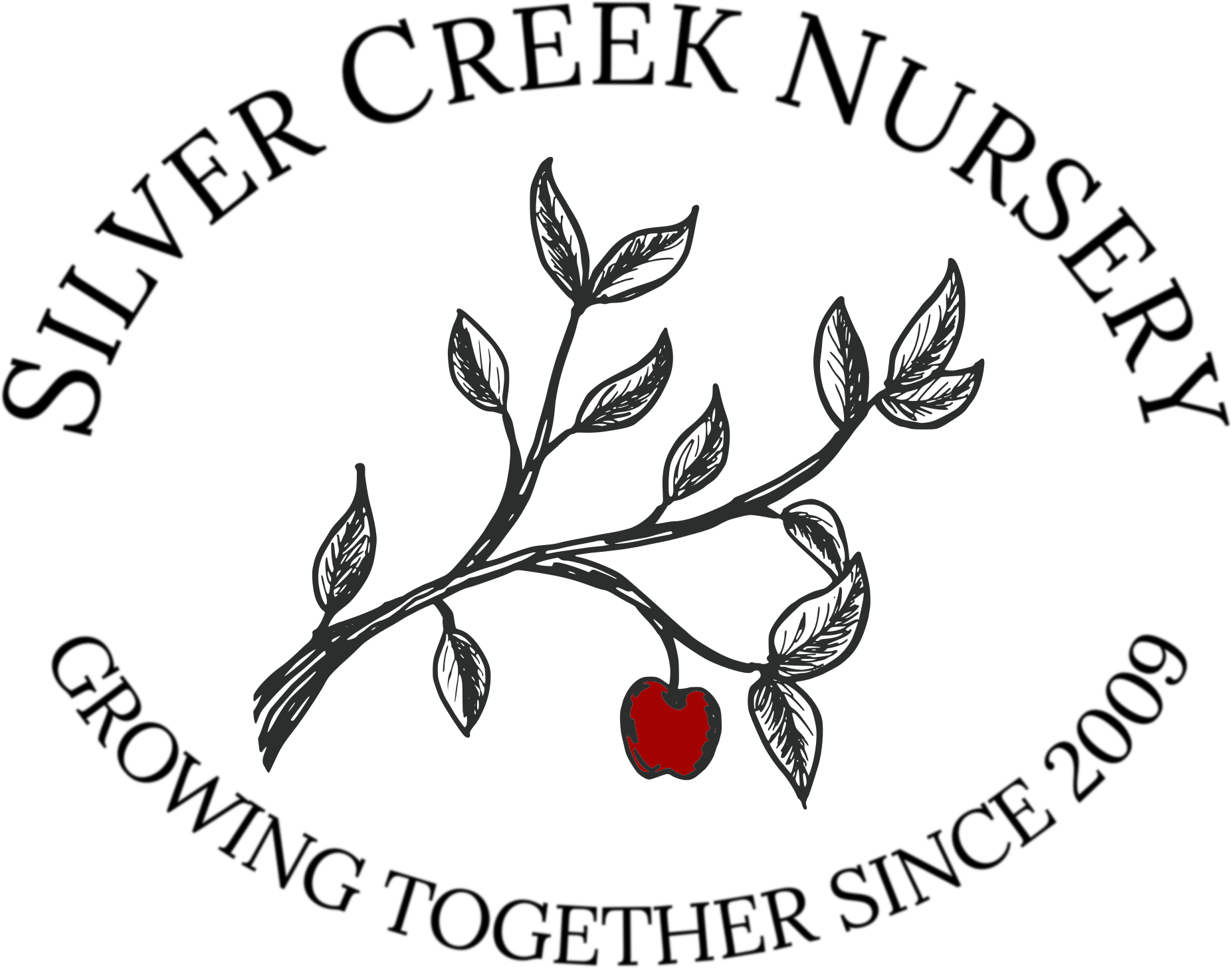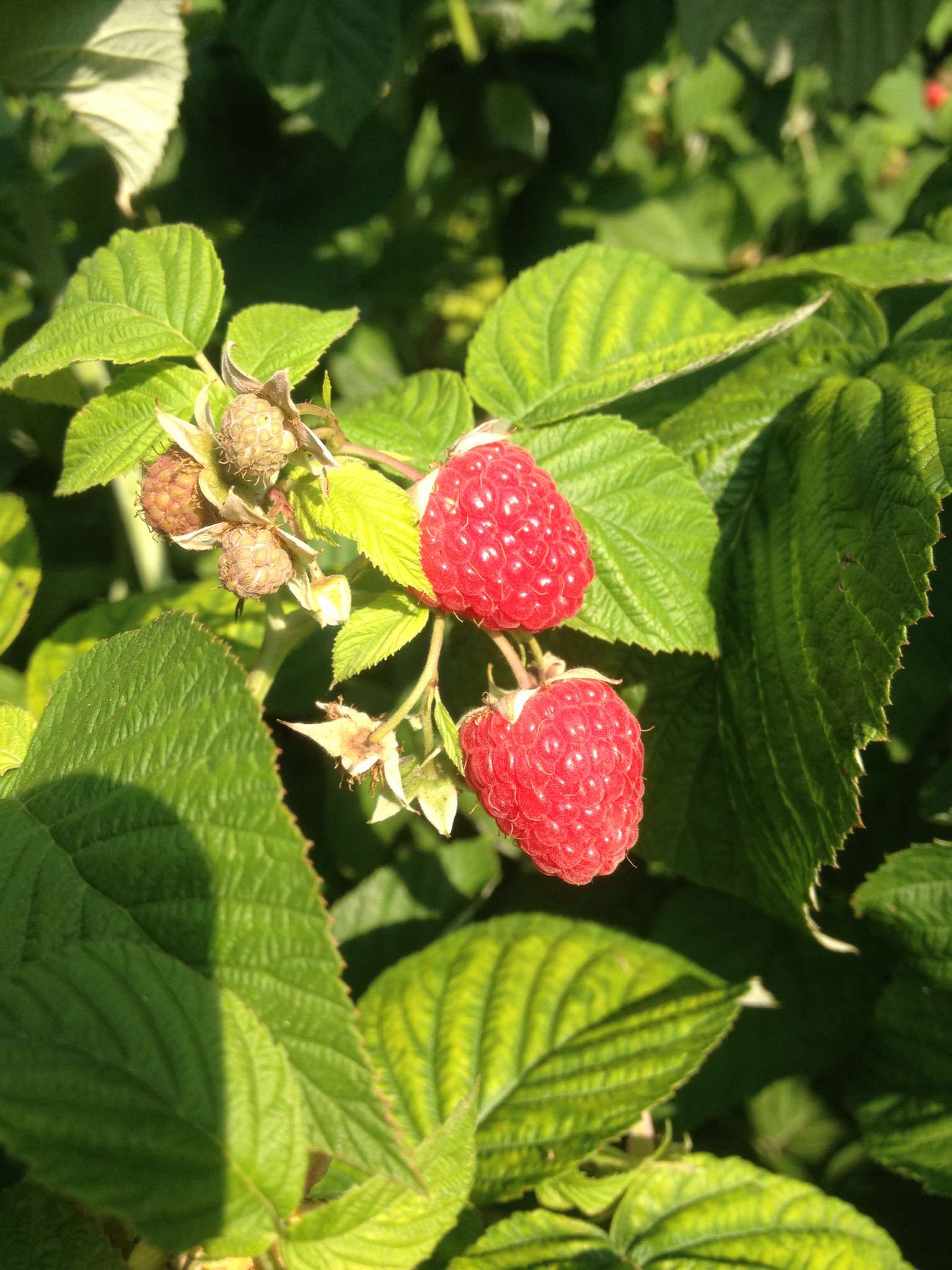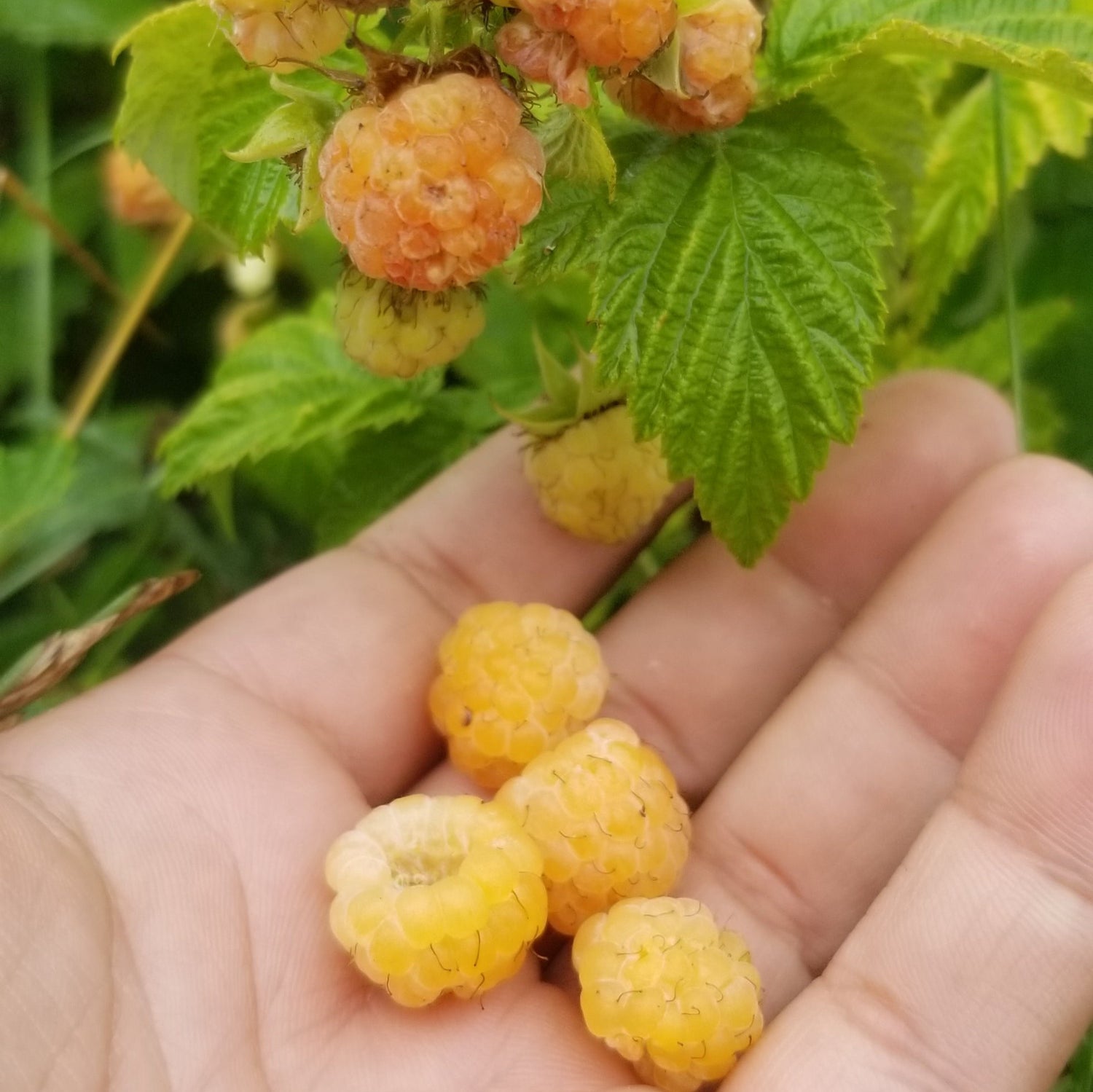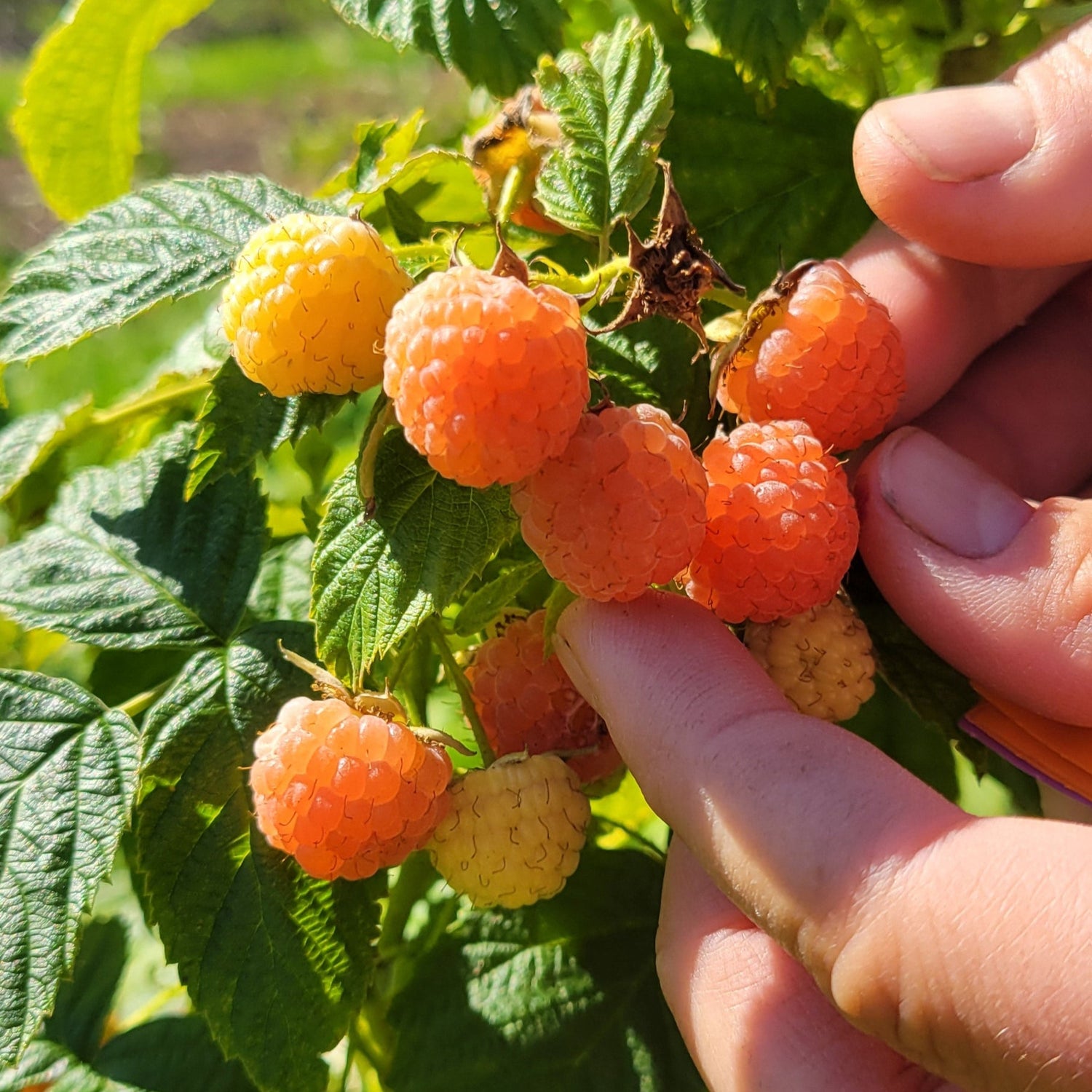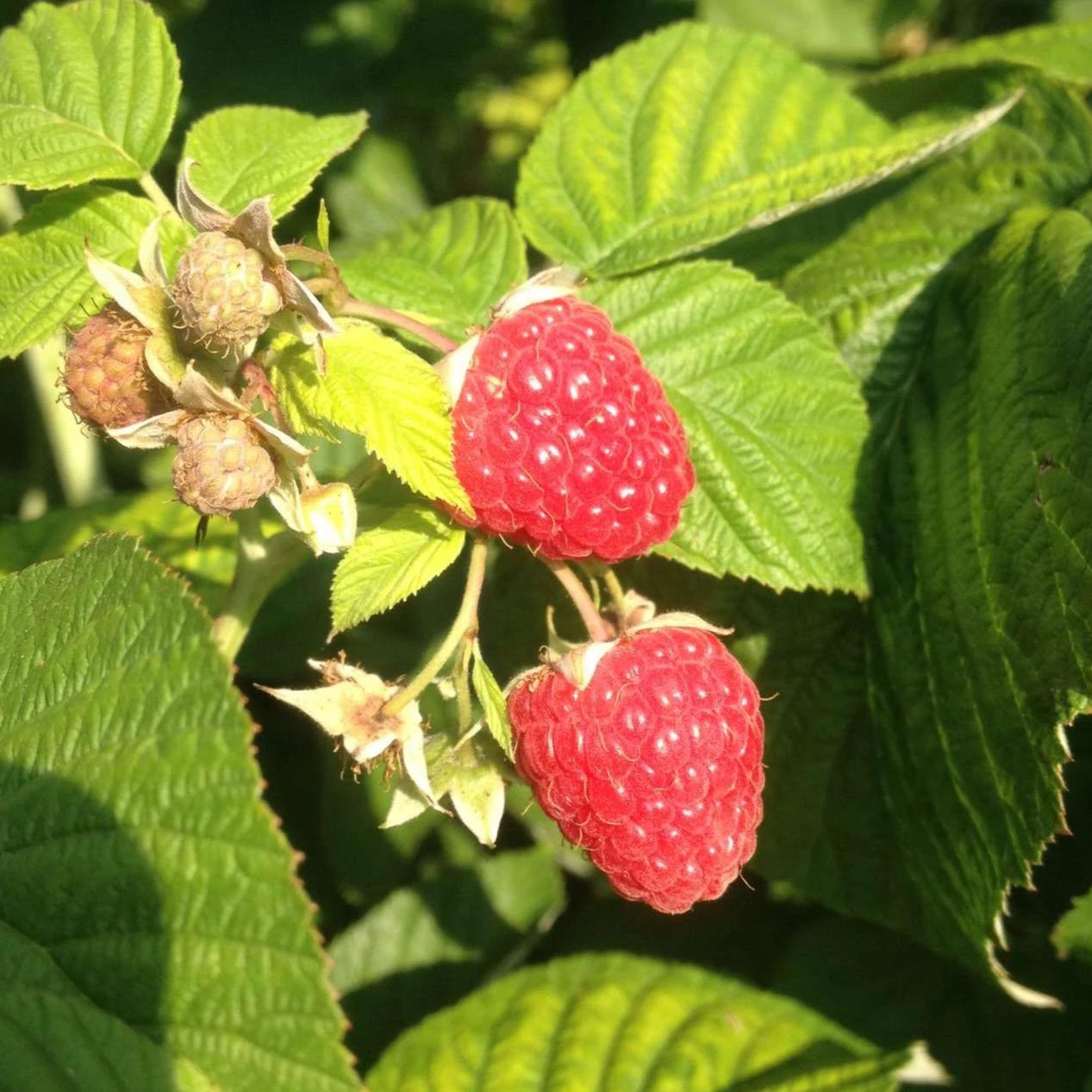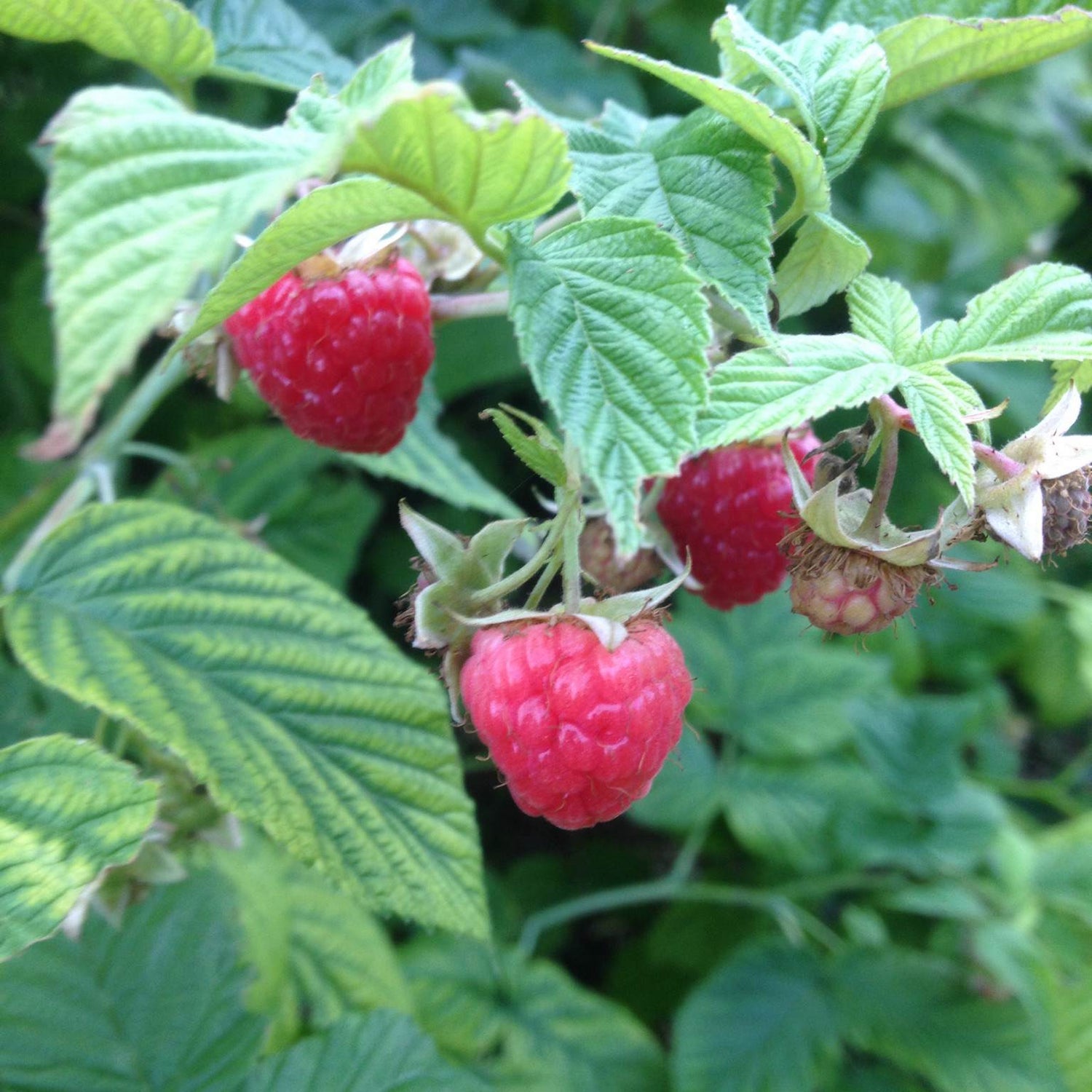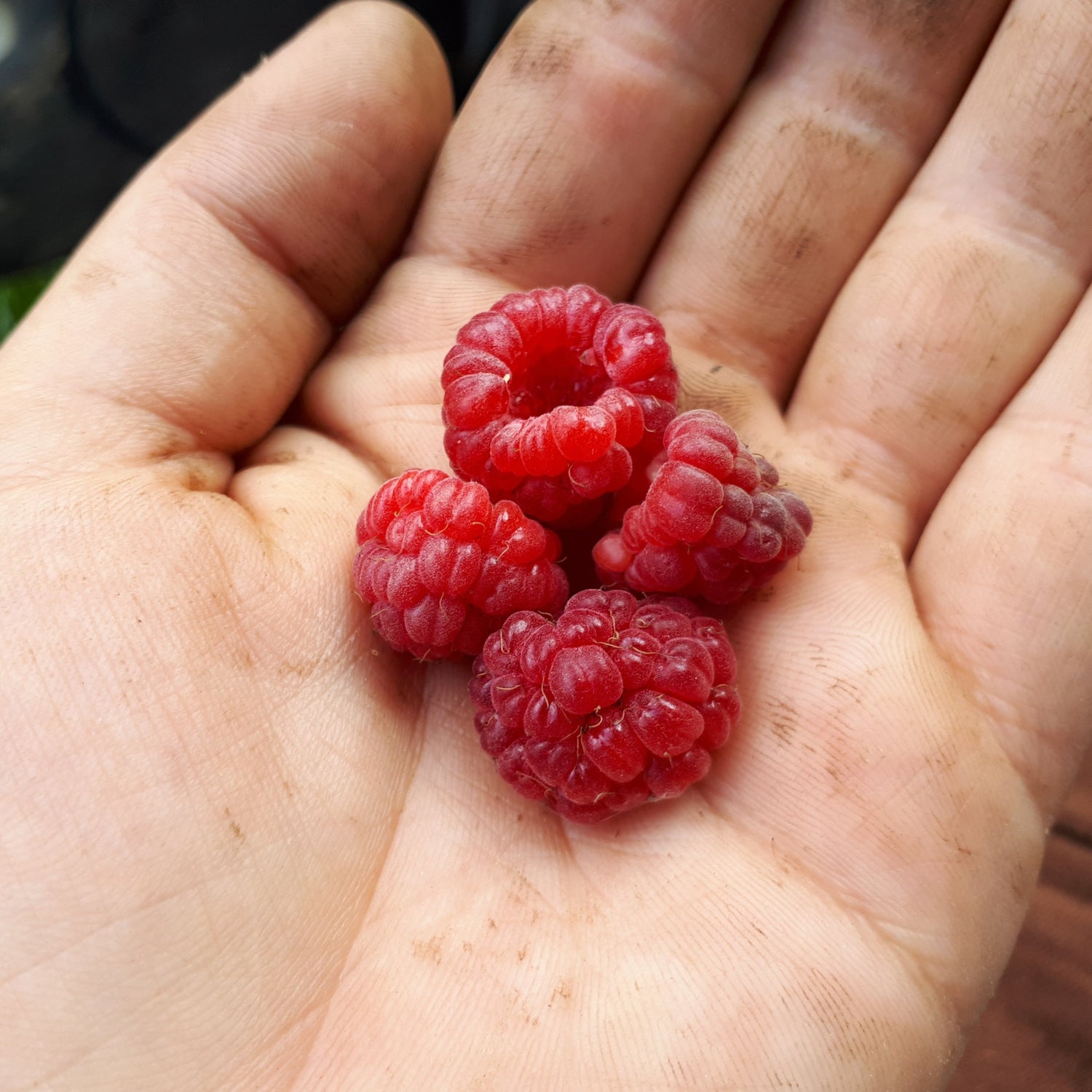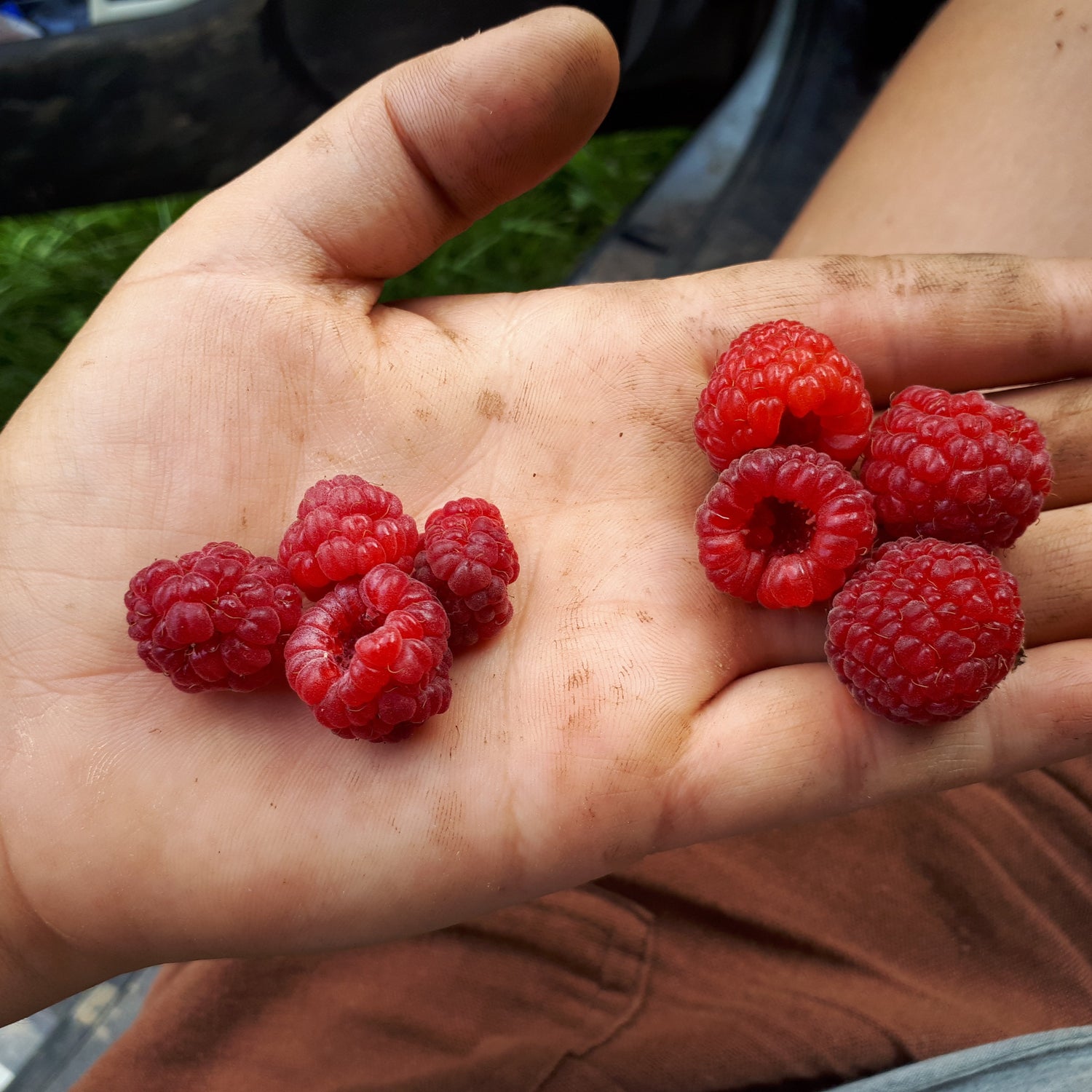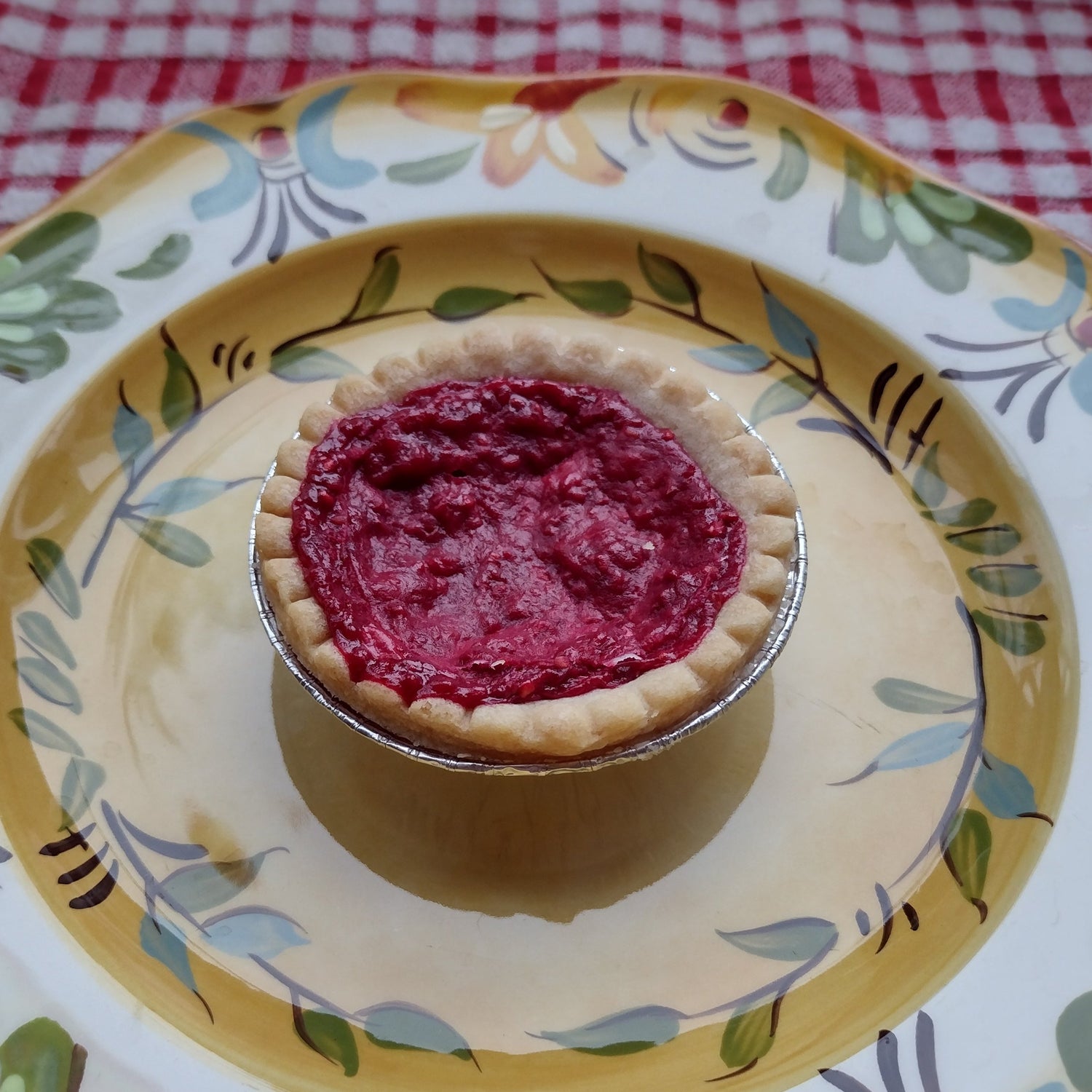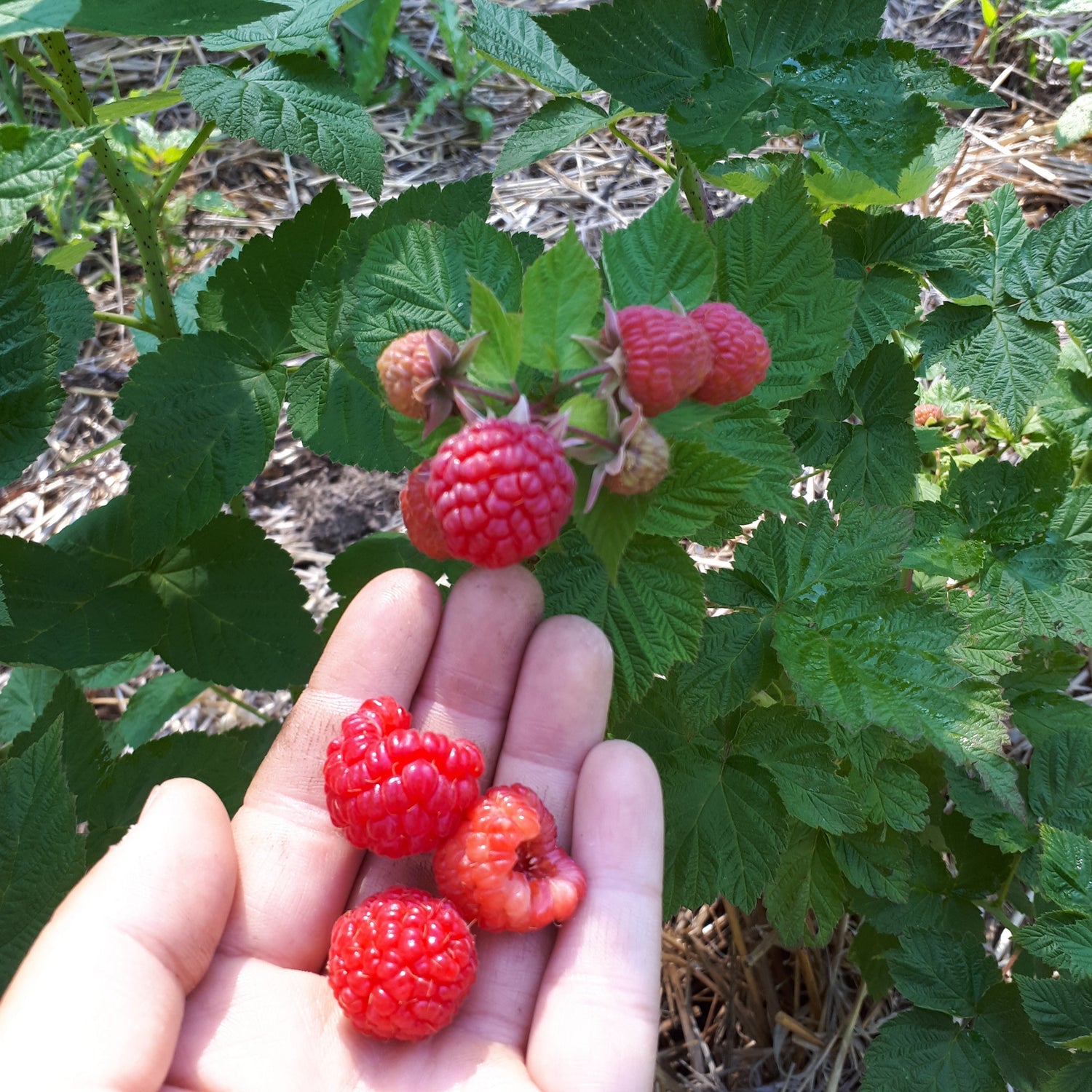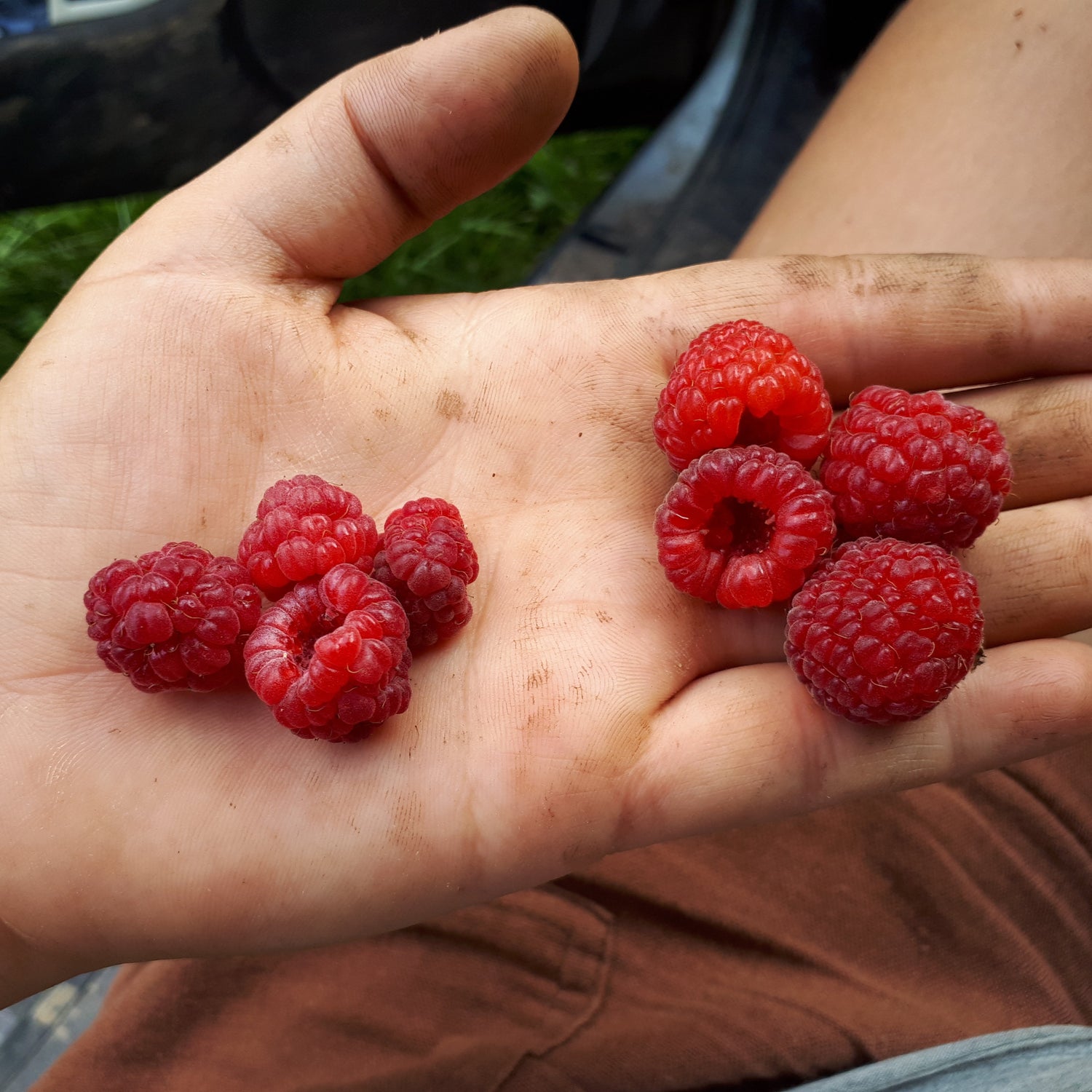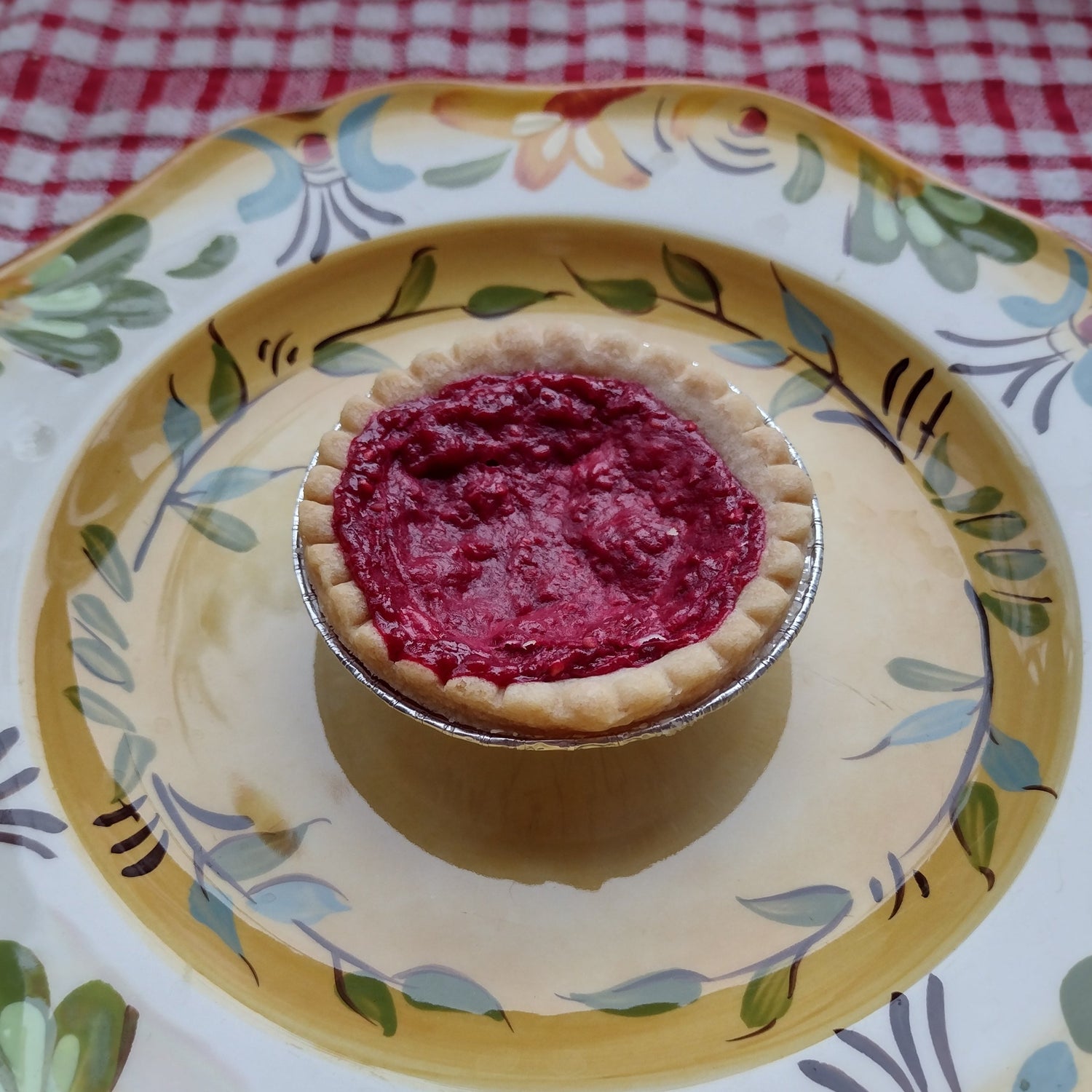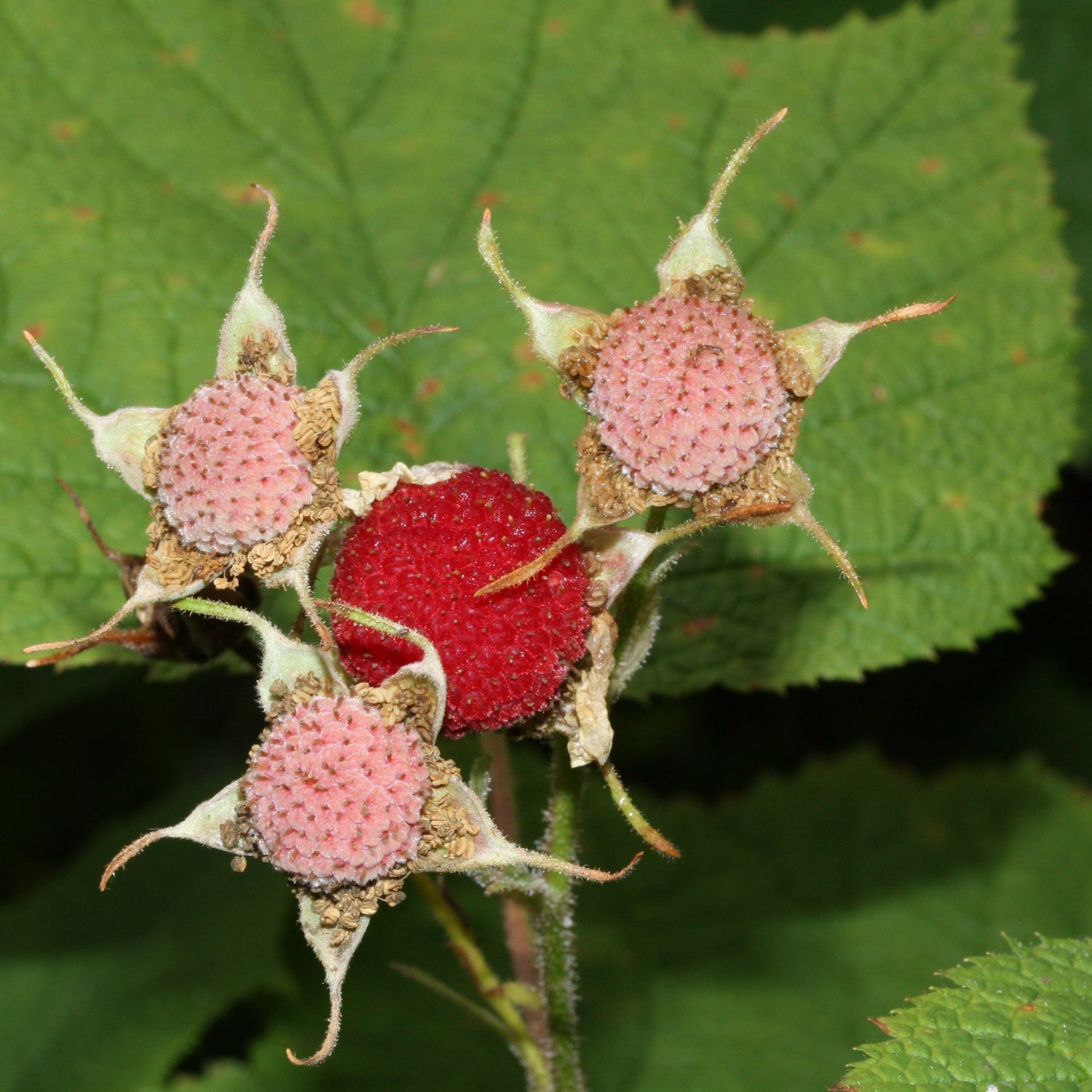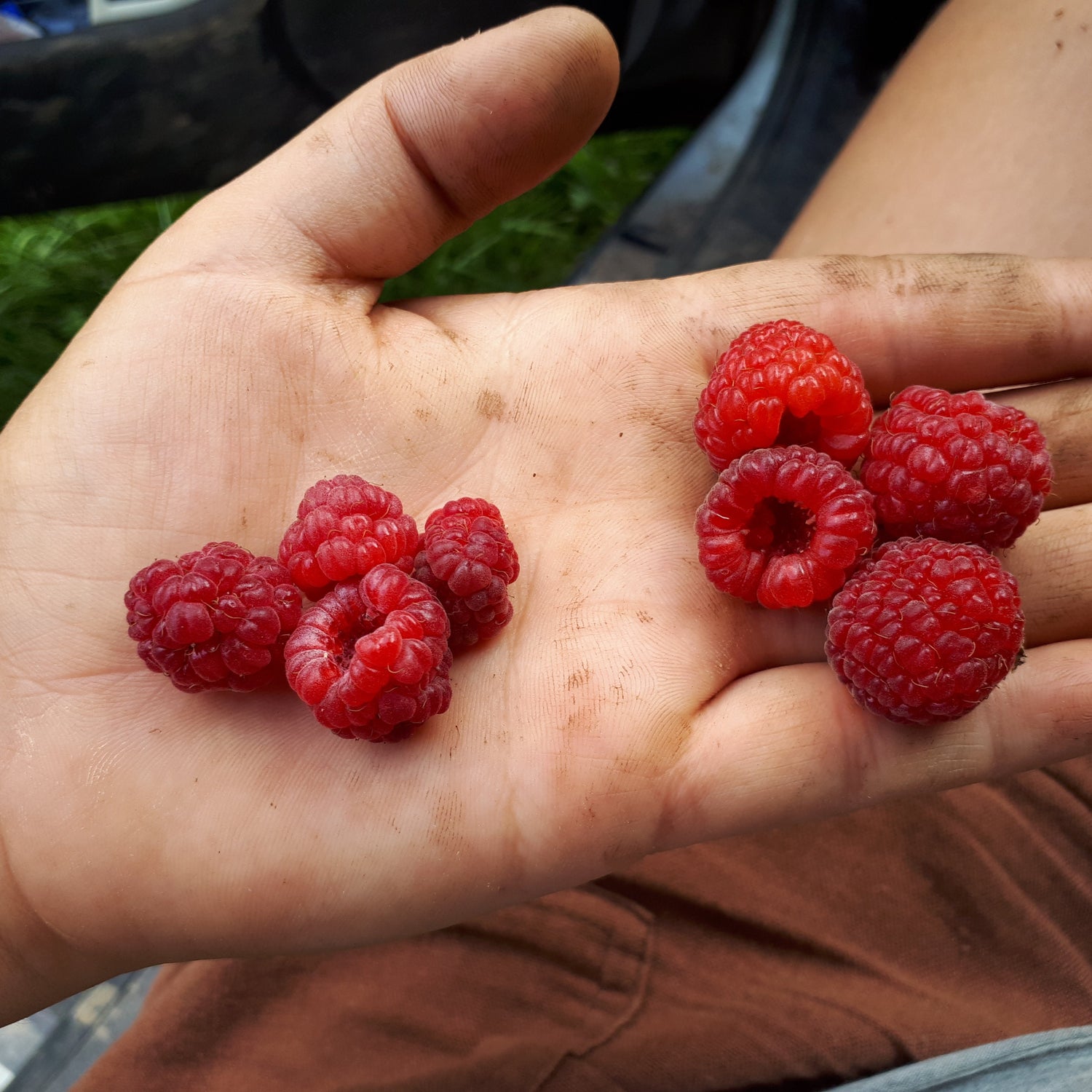Raspberries
Raspberries are generally hardy and easy to grow plants that produce bountiful quantities of delicious fruit. Although you have to be mindful of the thorns, it is well worth it for the sweet fruit that is great when eaten fresh or used in baking and preserves. We are excited to offer a growing rainbow of raspberries now that we have red, black, purple, and yellow varieties! Some varieties are summerbearing and others are everbearing - see the descriptions of each! Raspberries are self-pollinating.
Sort by:
9 products
9 products
Species: Rubus sp.
History: Anne is the product of quite the combined efforts between the University of Maryland, Rutgers University, Virginia Polytechnic Institute and State University, Southern Piedmont Agricultural Research and Education Center, and University of Wisconsin. Through their cooperative breeding program, the cross that created Anne was originally made in 1989 and the variety was released in the 1990s. It remains one of the more popular yellow raspberries today.
Why We Grow It: Anne produces large, firm raspberries that are quite sweet with a flavour some liken to apricots or bananas. Most uniquely: the berries are yellow, turning a warm orangey-yellow at their ripest! The berries are good for eating fresh, baking, freezing, or adding to salads and their yellow colour helps them to stand out. This is an everbearing variety so you can cut down the canes in the winter for a large fall crop, or enjoy a more spread out crop from August to September. Anne also sports relatively few thorns, making harvesting a little easier.
Species: Rubus sp
History: These red raspberries were grown by our great-grandmother and have been passed down through the family.
Why We Grow It: We might be a little biased, but we think they have superior flavour! The fruit is very uniform, not crumbly, and holds its shape well fresh or frozen.
A note on the "Grandma" Series: Inspired by Ken's 'Grandma Ethel Black currant', we decided to curate our own repertoire of random (may be a cultivar from long ago, or a favoured seedling) berries that have become family favourites! Check out our tried-n-true rhubarb and gooseberries in addition to the currants and raspberries.
Species: Rubus sp.
History: Heritage raspberries were developed by Cornell University in New York and introduced in 1969. It is one of the most widely grown raspberry varieties in the world due to the quality of its fruit and its extended bearing season. This variety is considered the standard for everbearing varieties and in 2004 it even received the Outstanding Fruit Cultivar Award from the American Society of Horticultural Sciences.
Why We Grow It: On top of the accolades mentioned above, these medium-sized red berries can also be harvested within the first year! You can enjoy them fresh or in baked goods, or freeze, dry, or preserve them to enjoy in the winter months. We find these to be sweeter than Nova, but with a milder flavour and slightly crumbly texture. The canes are thorny so exercise caution when working around this variety! You can cut down the canes in the winter for a large fall crop, or enjoy a more spread out crop from June to September. We have found cutting the patch down annually also helps with borer problems.
The second product photo shows Nova (right) compared to Heritage (left).
The third photo shows a Heritage and Nova raspberry tart Steph made!
Species: Rubus occidentalis
History: Jewel black raspberries were bred by Cornell University in New York in an effort to create productive and vigorous black raspberry varieties. It was bred in 1954 as a cross between Bristol and Dundee black raspberries.
Why We Grow It: Black raspberries are a special treat with less tang than red raspberries, and more of that musky sweetness that black berries (mulberries, blackberries, etc.) have. Steph eats these berries by the handful - delicious! This variety produces nice clusters of sweet juicy berries. The plant itself reaches about a meter high and wide. It can spread over the years, creating a most delicious fence line if you let it!
Species: Rubus sp.
History: Nova red raspberries were developed at the AAFC Research and Development Centre in Kentville, Nova Scotia as part of a breeding program. They were bred as a cross between Southland and Boyne raspberries and released in 1981.
Why We Grow It: These nearly thornless canes bear a plentiful yield of bright red, large-sized berries. The finer textured fruit is less crumbly and has a bold flavour. Nova red raspberries are very hardy and are summer-bearing in colder climates and ever-bearing in warmer ones!
The second product photo shows Nova (right) compared to Heritage (left).
The third photo shows a Heritage and Nova raspberry tart Steph made!
Species: Rubus occidentalis
History: Ohio's Treasure was developed by Dale Stokes and Dr. Harry Schwartz in an effort to create an everbearing black raspberry. The original cross was made in 2006 and the seedling was grown on a raspberry farm in Wilmington, Ohio. Successful in their efforts, the variety was released in 2015.
Why We Grow It: Ohio's Treasure produces medium-sized black raspberries with an excellent sweet flavour. Ohio's Treasure is unique amongst black raspberries in that it is an everbearing variety, producing a main crop through late summer into fall and then another crop on the second year wood in July, around when Jewel ripens. Although not firm enough for largescale commercial shipping, this is an excellent variety for the garden or local market growers who want to extend the black raspberry season.
Species: Hybrid of Rubus idaeobatus and Rubus occidentalis
History: Royalty was bred at the Geneva Experiment Station in Geneva, New York as a cross between red and black raspberries. It was released in 1982 and is the most popular purple raspberry variety on the market for both its productivity and sweetness.
Why We Grow It: Royalty is an excellent summer-bearing variety, producing ample crops of large (some get an inch long!), purple berries that are very sweet. Purple raspberries are a unique hybrid which can be picked while a little unripe and still red for a classic raspberry flavour or when fully ripe and purple for a sweeter taste more akin to black raspberries. Steph is impressed with the quality, flavour, and long harvest window of this variety.
Species: Rubus parviflorus
History: Thimbleberries are a native plant closely related to raspberries and blackberries. Cultivated for edible, ornamental, and ecological reasons today, they have also historically been used by indigenous peoples as a source of food and medicine.
Why We Grow It: This is an excellent under-story plant that produces smaller, flatter berries than cultivated raspberries, but with a delicious sweet-tart flavour. Apparently young shoots can be harvested in spring, lightly peeled, and then boiled for an asparagus-like 'vegetable'- we haven't tried this yet, but would love to hear from you if you have! The thornless bush grows up to 7 feet tall, though can be kept smaller with pruning/trellising/tying down. The fruit grows best on 2-3 year old canes unlike raspberries, which makes this an ideal plant for living fences.
Species: Rubus idaeus
History: Tulameen was bred at the Pacific Agri-Food Research Centre in 1980 and released in 1990. It was selected for its disease resistance, long ripening period, large fruit, and excellent flavour and quality. The name likely comes from either the Tulameen River or the town of Tulameen in BC, although it also means 'red earth' in Nlakaʼpamuctsin.
Why We Grow It: Tulameen is a summer-bearing variety that is known for producing large crops of huge red raspberries that are very sweet and jammy! The exceptionally tall canes may require some trellising but have very few thorns which makes handling them much easier than other varieties.
